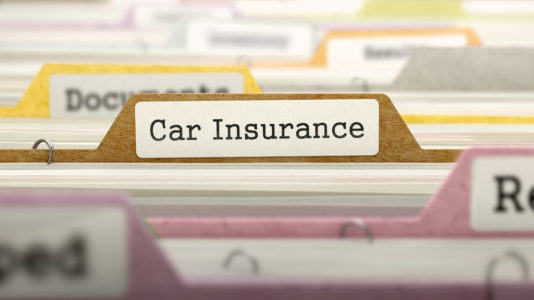What year did it become mandatory to have car insurance?

Free Car Insurance Comparison
Compare Quotes From Top Companies and Save
Secured with SHA-256 Encryption
Brad Larson
Licensed Insurance Agent
Brad Larson has been in the insurance industry for over 16 years. He specializes in helping clients navigate the claims process, with a particular emphasis on coverage analysis. He received his bachelor’s degree from the University of Utah in Political Science. He also holds an Associate in Claims (AIC) and Associate in General Insurance (AINS) designations, as well as a Utah Property and Casual...
Licensed Insurance Agent
UPDATED: Jan 5, 2024
It’s all about you. We want to help you make the right coverage choices.
Advertiser Disclosure: We strive to help you make confident car insurance decisions. Comparison shopping should be easy. We are not affiliated with any one car insurance provider and cannot guarantee quotes from any single provider. Our partnerships don’t influence our content. Our opinions are our own. To compare quotes from many different companies please enter your ZIP code on this page to use the free quote tool. The more quotes you compare, the more chances to save.
Editorial Guidelines: We are a free online resource for anyone interested in learning more about car insurance. Our goal is to be an objective, third-party resource for everything car insurance-related. We update our site regularly, and all content is reviewed by car insurance experts.
UPDATED: Jan 5, 2024
It’s all about you. We want to help you make the right coverage choices.
Advertiser Disclosure: We strive to help you make confident car insurance decisions. Comparison shopping should be easy. We are not affiliated with any one car insurance provider and cannot guarantee quotes from any single provider. Our partnerships don’t influence our content. Our opinions are our own. To compare quotes from many different companies please enter your ZIP code on this page to use the free quote tool. The more quotes you compare, the more chances to save.
On This Page
- The laws have gone into effect at different times, and they continue to change from one year to the next as states adjust their minimum requirements
- The goal is to reduce the overall number of uninsured motorists
- No-Fault states may require personal injury protection
- The laws in no-fault states vary from other areas, and you should understand your rights and responsibilities
In 1897, an Ohio resident purchased an insurance policy. It was written for his horse and carriage and extended to include his automobile and would cover damages to another person’s property or their injuries.
The early years of auto insurance focused on the liability end, but this changed in 1902 when a fire and theft policy was written, which was the first time that insurance would pay for damage to the owner’s private vehicle.
In 1912, history was made again with the first multi-line policy, which combined liability, property, and fire coverage into one account. It would become the template for future policies.
In 1927, Massachusetts became the first state to have a mandatory insurance requirement. The objective was to keep all drivers financially responsible for accidents on the road, and the concept soon spread to other states.
Make sure you have the coverage required by your state by entering your zip code into our FREE comparison tool above!
Understanding Compulsory Auto Insurance

In addition to the liability requirements, no-fault states may also demand additional types of protection for drivers.
Compulsory auto insurance is required in almost every state, with New Hampshire being the lone exception. This liability insurance is in place to pay for the damages to another parties property or their medical bills if you cause an accident.
Each state has different liability limits based on what legislators believe is appropriate. In general, the public supports mandatory insurance laws as a way to protect all drivers on the road from financial losses.
Many states use electronic insurance verification methods to compare insurance rosters with registered vehicles. This system allows them to identify quickly people who may be driving without insurance and take action.
The goal has been to reduce the overall number of uninsured motorists, but research shows that the mandatory coverage laws are not necessarily achieving that goal.
It’s estimated that 13 percent of drivers on the road currently are uninsured, but that number has dropped slightly in recent years.
If you’ve been avoiding getting insurance due to the perceived high cost, you’ll be relieved to know that it’s possible to lower your rate by shopping around with different companies.
FREE Car Insurance Comparison
Compare quotes from the top car insurance companies and save!
Secured with SHA-256 Encryption
Challenged in Court
In some states, like California, the mandatory insurance laws have been legally challenged and upheld by the courts.
The chief complaint was that the law required low-income drivers to carry insurance without guaranteeing that they would be able to afford the rates.
However, the court noted that there are state-backed assigned risk programs that were available to all drivers and were more affordable than ordinary insurance.
The California law went into effect in 1984, and it was upheld by the State Supreme Court in 1987.
Changing Requirements

Previously, Ohio had the second lowest limits in the nation, but as of March 2013, Ohio drivers must carry:
- $25,000 per-person injury protection
- $50,000 injury protection per accident
- $25,000 in liability insurance
Drivers were given a nine-month grace period to correct their coverage levels, so people had time to find the right plan and work the new premium into their budgets. This change put Ohio in line with the rest of the country.
Compare quotes from the top car insurance companies and save!
Secured with SHA-256 Encryption
The No-Fault States and Personal Injury Protection
Several states operate under a platform, including Florida, Michigan, New Jersey, New York, Kansas, Kentucky, Minnesota, North Dakota, Hawaii, Massachusetts, Pennsylvania and Utah.
This coverage is designed to handle your own medical expenses in the event of an accident, regardless of fault. It includes:
- Coverage for you and your passengers
- Payments for medical and rehabilitation expenses
- Work loss benefits
The laws in no-fault states vary from other areas, and you should understand your rights and responsibilities.
When you shop around for auto insurance, ask if you have all the necessary protections for driving in these states.
Driving is considered a privilege, and it does come with certain added costs. In addition to the maintenance and operation of your vehicle, you also need to allow for the insurance payments in order to stay legal.
By shopping around and getting multiple quotes, you can be confident that you’ll receive the best possible price for your needs. Enter your zip code into our comparison tool below to get started!
FREE Car Insurance Comparison
Compare quotes from the top car insurance companies and save!
Secured with SHA-256 Encryption
Brad Larson
Licensed Insurance Agent
Brad Larson has been in the insurance industry for over 16 years. He specializes in helping clients navigate the claims process, with a particular emphasis on coverage analysis. He received his bachelor’s degree from the University of Utah in Political Science. He also holds an Associate in Claims (AIC) and Associate in General Insurance (AINS) designations, as well as a Utah Property and Casual...
Licensed Insurance Agent
Editorial Guidelines: We are a free online resource for anyone interested in learning more about car insurance. Our goal is to be an objective, third-party resource for everything car insurance-related. We update our site regularly, and all content is reviewed by car insurance experts.